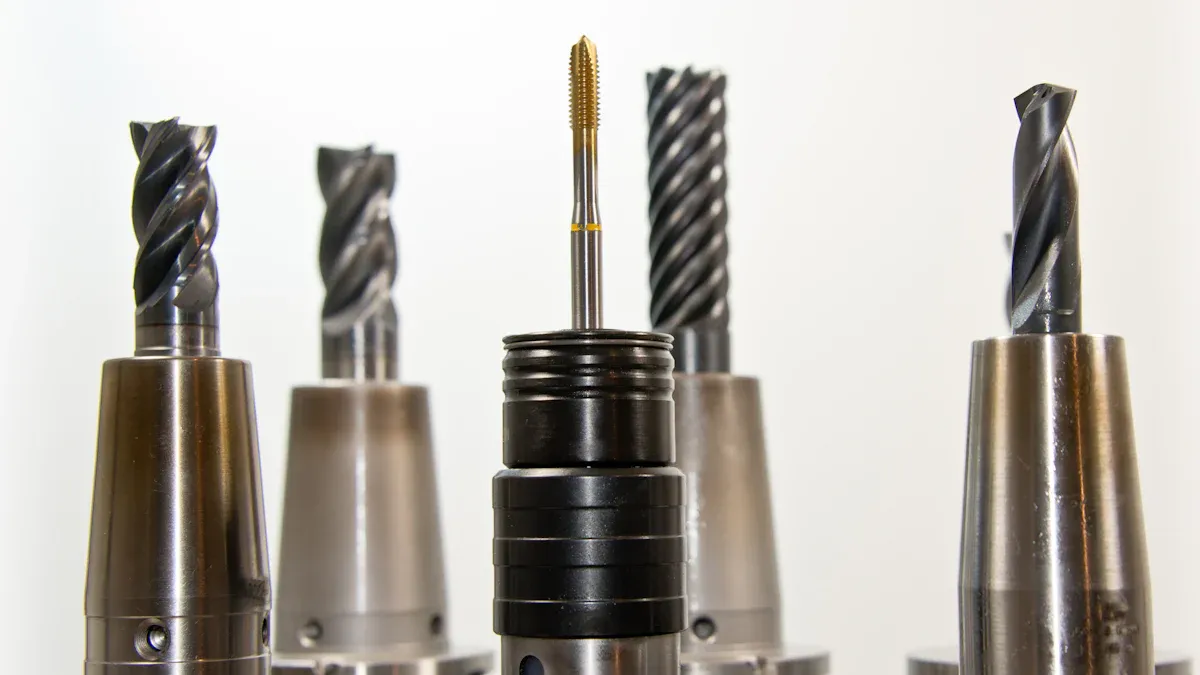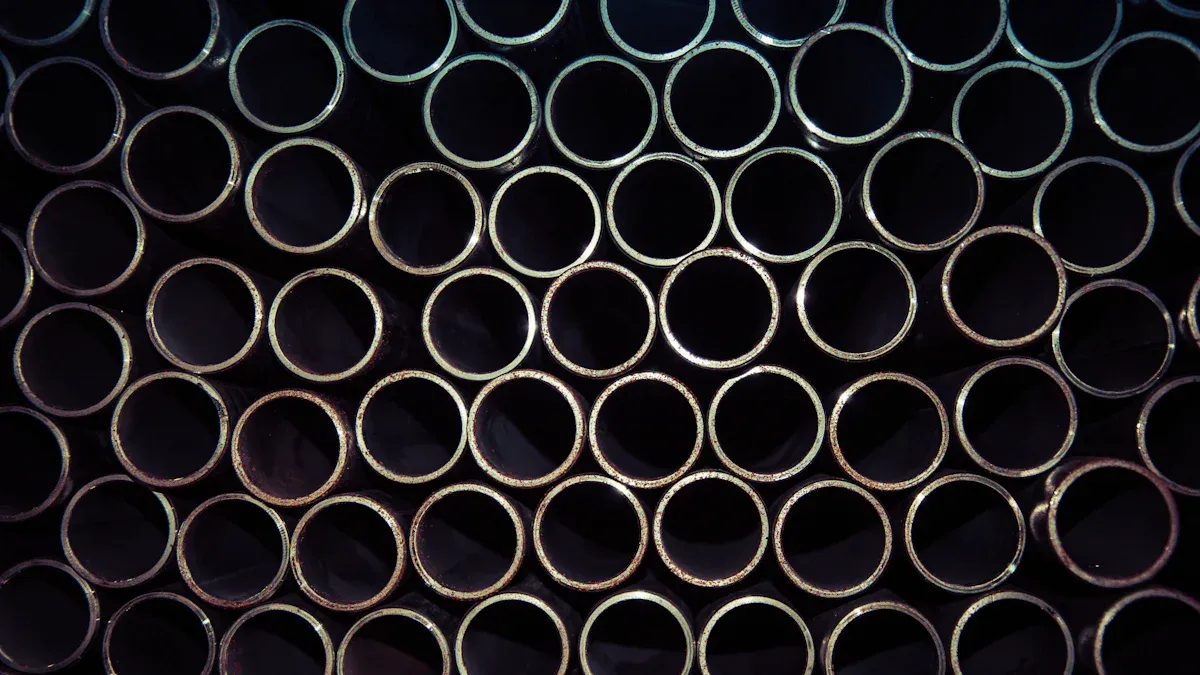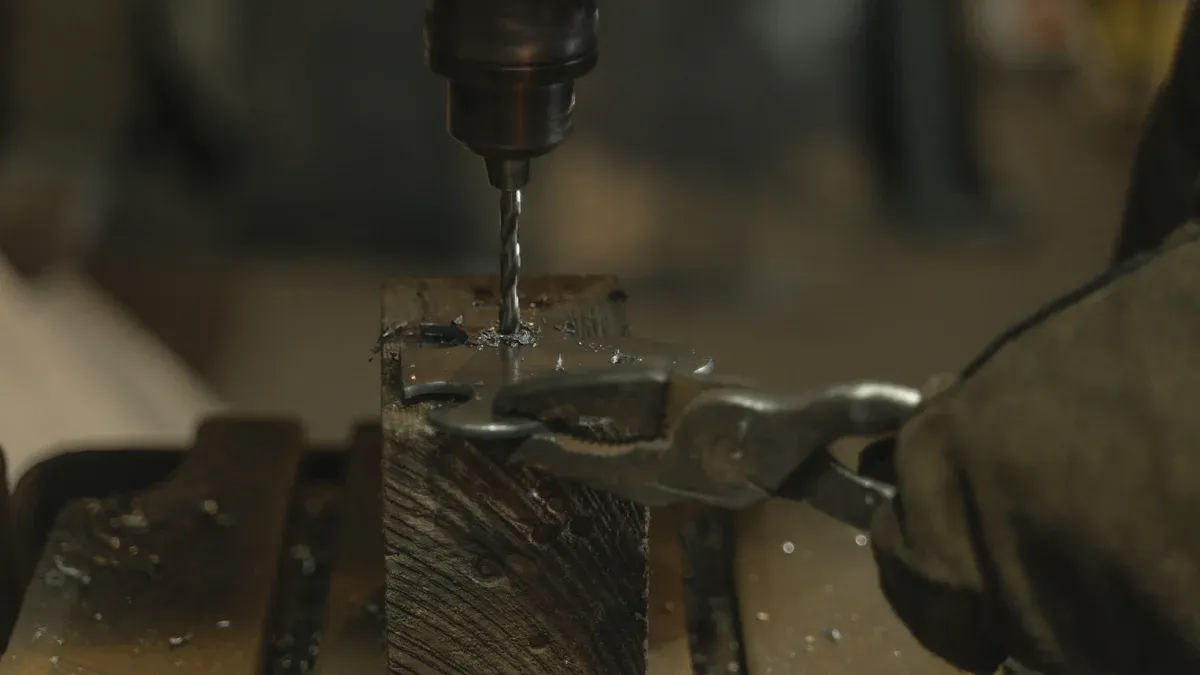How Niti Tubing Is Manufactured for Stent Applications

Niti tubing for stents needs a careful and exact process. Engineers begin with very pure nitinol, which is a special alloy. This alloy is known for shape memory and superelasticity. Niti is important in medicine because it fits the body’s needs. Making niti tubing for stents has many careful steps to keep quality high. Nitinol gives great flexibility and strength, so it is needed for stents. Every step in making uses strict checks to make sure the material is good. Niti’s features make it the best choice for these important devices.
Key Takeaways
Nitinol tubing is special because it can remember its shape. It bends easily and does not rust. This makes it great for stents.
Makers use pure metals and careful melting to make nitinol alloy. This helps the tubing stay strong and safe for medical use.
Cold working and heat treatment make nitinol tubing stronger and more bendy. These steps also help it remember its shape better for stents.
Laser cutting makes smooth and exact patterns in the tubing. This helps stents fit well and last longer in the body.
Surface finishing and coatings keep nitinol tubing safe from rust and blood clots. This helps make sure it is safe and lasts long in patients.
Why Niti for Stents
Nitinol Properties
Nitinol is picked for stents because it has special features. This nickel-titanium alloy can remember its shape. If you bend or stretch it, it goes back to how it was. Doctors use this when they put niti cardiovascular stents in blood vessels. Nitinol is also superelastic. This means niti cardiovascular stents can bend a lot and not break. The material is very safe for the body. Niti cardiovascular stents do not cause many bad reactions or swelling.
Nitinol does not rust as fast as other metals in medical tools. This keeps niti cardiovascular stents strong and safe for many years. Nitinol is flexible and tough. This helps doctors put in the stents and makes them last longer. Tests show nitinol is better than stainless steel and cobalt-chromium alloys. It is stronger and works better. These things make nitinol the best for many medical tools, like drug-eluting stents.
Nitinol is special because it remembers its shape, bends easily, and does not rust much. This makes it better than other materials for medical use.
Stent Benefits
Niti cardiovascular stents help patients in many ways. The shape memory lets them open up and fit inside blood vessels. Superelasticity helps the stents move with the body. This lowers the chance of damage. Nitinol is safe for the body. It does not cause much swelling or rejection. This makes it good for long-term use in medical tools.
The table below shows how nitinol, stainless steel, and cobalt-chromium alloys compare for stents:
Material | Time to First Corrosion Defect (min) | Time to Corrosion-Induced Removal (min) | Corrosion Characteristics and Biocompatibility Implications |
|---|---|---|---|
Nitinol | ~908 | ~1880 | Nitinol lasts the longest before rusting. Electropolishing makes it even better. It lets out less nickel, so it is safer and lowers clot risk. |
Surgical Stainless Steel | ~325 | ~893 | This metal rusts the fastest. It is not as strong. It gets damaged more, so it is not as safe for the body. |
Cobalt-Chromium-Nickel | ~94 | ~190 | This metal rusts and breaks the fastest. It can crack and break apart. Even though it fights germs, it rusts too fast to be safe. |
Tantalum | ~560 | Greatest durability among tested materials | This metal resists rust better than some others. But it is not as important for nitinol comparisons. |

Niti cardiovascular stents, like drug-eluting stents, help patients get better results. These stents lower the chance of problems and last longer than others. Nitinol helps drug-eluting stents give medicine and keep blood vessels open. Doctors trust niti cardiovascular stents because they are safe and work well.
Material Prep
Vacuum Arc Melting
Workers pick nickel and titanium that are very pure. These metals come from trusted places that follow strict rules. The process needs the right mix of nickel and titanium, about 55% nickel and 45% titanium by weight. If the mix changes even a little, nitinol can act differently. To keep the metals clean, engineers use vacuum arc melting or vacuum induction melting. These ways stop oxygen from getting in with the metals. Oxygen can make bad spots that make nitinol tubes weaker.
In vacuum arc melting, the metals melt together in a closed space. There is no air inside, so oxidation does not happen. This makes the alloy even and keeps the nickel and titanium balanced. For big batches, double-melting is used. This means using both vacuum induction melting and vacuum arc remelting. This step helps the alloy stay the same and not have problems. After melting, the alloy cools down and becomes solid ingots or billets. These are used for the next part of making nitinol tubes.
Using pure metals and careful melting keeps nitinol safe and strong for medical use.
Alloy Bars & Tubing
After cooling, workers cut the billets into bars. The bars get heat treatments to make the inside even. This is important so nitinol works well in stents. Next, the bars are made into tubes. Special machines shape the bars into thin, hollow nitinol tubes. Each tube must be the right size and quality.
The team checks every batch for purity and structure. They use microscopes to find any bad spots or flaws. The tubes must meet FDA and ASTM rules. These checks make sure the nitinol tubes are safe for the body. Careful work at this stage helps make good stents later.
Tube Drawing

Cold Working
Engineers use cold working to make niti tubing. They pull nitinol through dies at room temperature. This is called cold drawing. It changes the shape of the metal without heat. The team makes the tubing about 30% smaller. This helps the tubing get the right thermoelastic properties. These properties let niti tubing expand and shrink in the body.
Cold working makes the inside of nitinol better. The grains inside get smaller and more even. This helps the material change between phases. The tubing becomes stronger and more bendable. Superelasticity also gets better, which is important for stents. Stents need to bend and go back to their shape. When engineers use cold working and heat treatment together, they can change the grain size. Very small grains give great superelasticity. Bigger grains help the tubing last longer. Finding the right balance is important for making strong nitinol tubes.
Cold working helps engineers make niti stents that work well and keep patients safe.
Cold drawing makes the tubing about 30% smaller.
The process makes the inside structure better and steadier.
Tubing gets stronger and more bendable after cold working.
Using cold working and heat treatment changes grain size and properties.
The process helps control superelasticity and how long the tubing lasts.
Dimensional Control
It is important to be exact when making niti tubing. Engineers use special cold-drawing steps to keep the tubing the right size. They pull the tubing through smaller dies each time. Each step makes the tubing a little thinner. Between steps, they use annealing to keep the tubing strong and stop cracks.
Special systems watch the force, speed, and temperature. These systems help keep the tubing the right size. Heat treatment is controlled between 450°C and 550°C. This keeps the tubing from changing size too much. It also makes the tubing work better.
Surface finishing, like electropolishing and microabrasion, keeps the tubing smooth and the right size. These steps make the surface better. Engineers use tools like laser micrometry and ultrasonic testing to check the tubing. These tools can measure very small changes, up to ±0.005mm. This makes sure every piece of niti tubing is just right for medical use.
Keeping the tubing the right size makes sure each stent fits and works well in the body.
Dimensional Control Method | Purpose |
|---|---|
Multi-stage cold drawing | Makes the tubing thinner in steps |
Intermediate annealing | Keeps the tubing strong |
Process monitoring systems | Watches force, speed, and temperature |
Controlled heat treatment | Stops size changes, makes tubing better |
Surface finishing (electropolishing, microabrasion) | Keeps size right, makes surface smooth |
Advanced metrology (laser micrometry, ultrasonic testing) | Checks the tubing is the right size |
Heat Treatment
Shape Memory
Heat treatment gives nitinol tubing its special memory. Engineers use this step to set the stent’s shape. They put the tubing in a salt bath and heat it up. The temperature is between 455°C and 565°C. This helps the tubing remember its shape. It also stops bad changes inside the metal. How long the tubing stays hot depends on its size. Small tubes need only a few minutes. Bigger tubes can need up to 20 minutes. After heating, they cool the tubing fast in water. This quick cooling keeps the memory in place.
The main temperature for memory is 455°C to 565°C.
Salt baths help keep the memory and stop new crystals.
Small parts need less time in the heat than big ones.
Fast water cooling keeps the memory safe.
The Austenite Finish temperature (Af) tells when memory is set.
This step makes nitinol a real shape memory alloy. Now the tubing can go back to its shape after bending. Doctors use this memory to help stents open in blood vessels.
Heat treatment is the most important step for nitinol’s memory.
Superelasticity
Superelasticity is another big part of nitinol. After heat treatment, engineers check if the tubing bends and goes back. They use tensile tests to see how much it can stretch. Differential scanning calorimetry (DSC) checks the right temperatures for superelasticity. Non-destructive tests like X-ray and ultrasound check the tubing’s inside and outside.
Tensile tests show how much the tubing can stretch and return.
DSC checks the right temperatures for memory and superelasticity.
X-ray and ultrasound make sure the tubing is strong and safe.
These tests show that heat treatment worked well. The tubing now has memory and superelasticity. This makes nitinol great for medical stents. Patients get tubing that bends with the body and returns to its shape.
Laser Cutting for Niti Tubing

Stent Patterning
Engineers use lasers to make special patterns in stents. These patterns help the stent open, bend, and hold blood vessels. The niti tubing is ready after careful steps and heat treatment. Technicians put the tubing into a laser cutting machine. They set the machine to follow a digital plan for the stent’s shape.
Fiber lasers and femtosecond lasers are the main tools for this job. These lasers cut tiny shapes with almost no heat damage. Femtosecond lasers use cold ablation, so the tubing needs little polishing. This saves time and keeps the tubing strong. The laser moves along the tube and makes small cuts. These cuts create the stent’s mesh pattern. Each cut must be smooth and not have sharp edges. This helps keep the stent safe inside the body.
Laser cutting lets engineers make stents that are both strong and flexible. The right pattern helps the stent fit well in the blood vessel.
Precision Cutting
Being exact is very important when using lasers. Some parts of the stent are as small as the laser spot. The spot size is about 16.5 to 32.5 micrometers. Engineers use special lasers like ytterbium fiber and femtosecond lasers for these tiny details. The machines keep tight tolerances, often within ±0.005 mm. This is needed for tubing smaller than 0.3 mm wide. This control makes sure every stent is made right and works safely.
Feature Aspect | Value / Description |
|---|---|
Laser Spot Size | About 16.5 to 32.5 micrometers |
Dimensional Tolerances | ±0.005 mm for tubing diameters ≤ 0.3 mm |
Laser Type | Ytterbium fiber and femtosecond lasers |
Cutting Precision | Little heat damage, smooth edges, fine finish |
High-precision laser cutting keeps the stent strong. Engineers control the laser’s speed, power, and pulse width. This lowers heat damage and stops tiny cracks. This careful work helps the stent stay flexible and strong. It also helps the stent last longer and not rust, which is important for medical devices.
Accurate laser cutting means less waste and better stents. Smooth cuts lower the chance of problems and help stents last longer in the body.
Laser cutting has changed how companies make stents and other medical tools. Cutting detailed patterns with little heat damage helps keep these products safe and working well.
Surface Finishing & Coating
Electropolishing
Electropolishing is an important step for medical nitinol. This process makes the tubing smoother by taking away tiny flaws. Engineers use it to help stop blood clots and rust. The tubing can get up to 87% smoother after this step. A smooth tube means cracks are less likely to start. This helps the stent last longer inside the body. Electropolishing also makes a thin, stable oxide layer. This layer keeps nickel from leaking out. That is important for making the tubing safe for people. By removing nickel-rich spots, electropolishing makes the tubing safer and stronger against rust.
Electropolishing is used in medical nitinol because it makes stents safer and last longer.
Surface Modification
Surface modification helps nitinol stents work better in the body. Passivation is a chemical step that puts a titanium oxide layer on the tubing. This layer helps stop rust and keeps nickel from coming out. Other ways add special coatings to the surface. Heparin coatings help stop blood clots. Hydroxyapatite coatings help bone tissue stick to the stent. Chitosan is a natural material that holds these coatings in place. Electrophoretic deposition puts coatings on even tricky shapes. All these steps help stop rust and make the stent safer for people.
Surface Modification Method | Purpose and Benefit | Biocompatibility Impact |
|---|---|---|
Passivation | Makes a titanium oxide layer, keeps nickel in | Makes tubing safer and stops rust |
Heparin Coating | Stops blood clots from forming | Helps blood work better with the stent |
Hydroxyapatite Coating | Helps bone stick, lowers nickel ions | Helps tissue connect to the stent |
Chitosan Matrix | Holds coatings in place, controls layers | Makes coatings stable and strong |
Medical Nitinol Processing Coatings
Medical nitinol tubing often gets special coatings. These coatings help stop rust and make the tubing safer for the body. Some coatings are hydrophilic, which makes the tubing easier to put in. Others are polymers like PTFE and parylene that help keep the tubing safe. Metallic coatings like titanium oxynitride stop metal ions from moving into the body. Natural coatings like heparin and chitosan slow down rust and help stop blood clots. These coatings must stay on even when the stent bends or stretches. Using these coatings helps nitinol stents meet strict rules and work safely in the body.
Electropolishing, passivation, and coatings are all important for medical nitinol.
These steps help stop rust and make stents safer and more dependable.
Quality & Standards
Inspection
Manufacturers check nitinol stent tubing very carefully. They use special tests that do not damage the tubing. These tests help find problems early. Ultrasonic testing looks for hidden problems inside the tubing. Eddy current testing finds issues on the surface. Workers also look at the tubing to spot marks or scratches. Engineers use laser micrometers and other tools to measure the tubing. These tools make sure the tubing is the right size. Real-time systems watch the process and catch mistakes fast. All these checks follow ASTM and ISO rules. This keeps every piece of tubing safe and high quality.
Ultrasonic testing finds problems inside the tubing.
Eddy current testing checks for surface issues.
Workers look for marks or scratches.
Measuring tools check the tubing’s size.
Real-time systems help keep quality steady.
Biocompatibility testing is also very important. It makes sure the tubing does not hurt body tissue. This helps keep people safe and makes the tubing last longer.
Regulatory Compliance
Nitinol stent tubing must follow strict rules in the United States and Europe. In Europe, these stents are Class III medical devices. Companies must follow Regulation (EU) 2017/745 and 2017/746. They need a Quality Management System that matches ISO 13485. A Design Dossier explains how the product is made. Companies outside Europe need an Authorized Representative. Notified Bodies check the company every year. The tubing must have a Declaration of Conformity and CE marking to be sold. Pre-clinical testing checks biocompatibility and follows ISO 10993, ISO 10555, and ISO 25539.
In the United States, the FDA has its own rules. ISO 13485 certification helps with quality and process control. Both places want safe, high-quality tubing and watch for problems all the time.
Manufacturers keep good records and use strong quality checks to meet these tough rules.
The table below shows the main standards and controls for nitinol tubing:
Evidence Category | Details |
|---|---|
Regulatory Certifications | ISO 9001:2015, ISO 13485:2016, EU CE marking |
Manufacturing Controls | Checks on temperature, pressure, and alloy mix |
Quality Control Measures | Tests for strength, force, and finding defects |
Biocompatibility Testing | Makes sure tissue stays healthy and safe |
Documentation | Good records kept for rule checks |
These steps help make sure nitinol stent tubing is safe, works well, and meets rules everywhere.
Manufacturers make stents using many special steps. They start by melting the alloy and end with careful checks. Laser cutting and surface finishing help keep nitinol’s special features. Quality control makes sure the stents are safe and work well. These medical devices, like drug-eluting stents, must not break or rust over time. Making stents is harder than making other medical tools. Drug-eluting stents and others help people by being exact, safe, and new.
FAQ
What makes nitinol tubing different from other stent materials?
Nitinol tubing can remember its shape and bend easily. These features help stents open up and fit blood vessels well. Nitinol does not rust as fast as stainless steel or cobalt-chromium alloys.
How do manufacturers ensure nitinol tubing is safe for the body?
Manufacturers use many careful checks to keep tubing safe. They look for problems, measure the tubing, and test if it is safe for the body. These steps follow FDA and ISO rules to protect patients.
Why do engineers use laser cutting for nitinol stents?
Laser cutting makes exact patterns in nitinol tubing. This gives the stents smooth edges and the right shapes. It helps the stents stay strong and bend inside the body.
What is electropolishing, and why is it important?
Electropolishing makes the surface of nitinol tubing smoother. It takes away tiny flaws and adds a safe oxide layer. This helps stop blood clots and keeps the tubing from rusting.
Can nitinol stents be coated with special materials?
Yes. Engineers often put coatings like heparin or hydrophilic polymers on stents. These coatings help the stent work better, lower clot risk, and make it safer for the body.
See Also
The Process Behind Manufacturing Nitinol Tubing For Medicine
Nitinol Tubing Transforming The Future Of Medical Devices
A Deep Dive Into Nitinol Tubing Uses In Healthcare
The Importance Of Nitinol Tubing In Advanced Medicine
Nitinol Tubing’s Role In Minimally Invasive Medical Procedures

